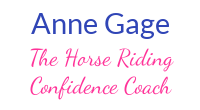
It’s a bit delayed, but seasonal fall weather has finally arrived where I live in Southern Ontario. One day it felt like summer and the next day it was definitely fall. These sudden changes in weather, drops in the barometric pressure and, of course, winds can affect the behaviour of some horses. Just leading your horse to or from the paddock or barn can be nerve wracking.
There are 3 common mistakes people make when their horses become anxious or spooky.
Mistake #1 – Anticipating that your horse will behave badly and becoming tense as a result. Of course, we all want to be safe when we are around our horses. They are, after all, very large, powerful animals that can hurt us without intending to. But, as a herd animal who is very sensitive to body language, when you get tense, your horse picks up on that and his tension increases.
What to do instead – Recognize that there is the potential for your horse to be anxious and take steps to calm yourself before you take your horse out of the paddock or barn. Breathing in calm, deep, slow breaths is the best way to calm your flow of adrenaline and release tension from your body. It also helps you stay mentally in the moment.
Mistake #2 – Holding on tightly to or shortening up on the lead rope or reins. It’s human nature to want to stop the horse’s movement. Notice how often you are telling your horse to ‘stop it’ or ‘whoa’. As a flight animal, feeling that his ability to move away from perceived danger adds to his tension and stress level.
What to do instead – Send your horse away from you and, if you have the room, in a circle around you. This requires giving him some more rope and that you aren’t holding your lead rope or reins tightly under his chin. Keeping him out of your space means he won’t be running over top of you if he panics. Sending him away addresses his need to move which helps him feel less stress.
Mistake #3 – Getting in your horse’s face. This happens in 2 ways. The first happens when you jerk or pull on the lead rope or bridle. The second happens when you turn to face your horse ‘head’ on. Both reactions also comes from our human nature to stop the horse’s movement. The horse’s response is to feel more stress as he feels threatened and typically throws his head up resulting in increased adrenaline release.
What to do instead – At the first sign that your horse is stressed, take a steady, supple contact on the lead rope or reins. With a gentle, rocking downwards pressure ask your horse to lower his head. If he tries to raise his head, use blocking resistance. Do not try to pull or force his head down. If he’s too stressed to lower his head or pushes through your blocking resistance, then put some space between you (see previous point). Lowering his head helps to bring down the level of adrenaline so that his stress level does not escalate.
If you slow down, breath and calm your mind, then you will be able to stay in the moment and be pro-active rather than reactive. Your body language will communicate more calmness to your horse and help to decrease his anxiety.
Your Turn
Does the weather affect your horse? Sharing your experiences or questions is simple. Just leave a comment or share your thoughts below or through Facebook, LinkedIn or Twitter.
Share this post to spread the word about a better way to work with horses. Enjoy your journey!
Interested in organizing a Confident Horsemanship clinic at your location? Click here for more information.
You’re welcome to use this article in your newsletter or blog as long as you notify me and include my credit information: ~ Written by Anne Gage, Confident Horsemanship (www.annegage.com).
Confident Horsemanship with Anne Gage – Putting you and your horse in good hands.

